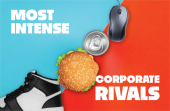22 Brand Names You've Been Using Generically (Probably)

Every so often, we all have one of those "everything you thought you knew was wrong" kind of moments. We're about to bring you some more of those. Well, 22 of them to be exact. Take it easy though, these aren't the fundamental truths of life that shape the very fabric of your being. We're just going to talk to you about products that you, and probably everyone you know, have been addressing incorrectly throughout your lives. Sometimes a given company's product becomes so popular that it literally ends up defining the industry, to the point of becoming a nearly generic term. Oh, and here's another thing to ease your mind - unlike most numerically-titled articles, you won't need to click through to a different page to see every example. We're including them all here on this one page.
Have you ever heard the term "genericized"? This is a term that refers to the kind of items we're talking about today. These are brands, products, and companies that in a way, have become victims of their own success. You would think that a company would enjoy the never-ending word of mouth that comes with this territory, but it has its downfalls. Most significantly, it allows other companies to make money using their names. Legal recourse can sometimes be an option when this happens, but in other cases, the usage becomes so prevalent that it the name more or less falls into the public domain and can be used by anybody. Now that we've set the stage, we'll begin the show and detail 22 brand names that are used generically.
1. Brand Name: Kleenex Actual Name: Facial Tissue

Anyone who holds a stake in Puffs, Scotties, Marcal, Nice N Soft, and a multitude of also-rans probably hate it when somebody around them sneezes and proceeds to ask for a "Kleenex". While Kleenex facial tissues are most often used for blowing one's nose, they were originally invented for the purpose of removing cold cream from one's face, which explains the facial tissue moniker.
Invented in 1924 and trademarked on November 25th of the same year, the Kleenex name was eventually acquired by Kimberly-Clark, which also owns such famous names as Huggies, Viva, and Cottonelle. As of 2017, Kleenex outsells Puffs, its closest competitor, by a ratio of 3 to 1. This widespread use and recognition has led to it being included as a word in both the Merriam-Webster and Oxford English Dictionaries. Despite this fact, Kleenex has not yet slipped into the territory of public domain usage.
2. Brand Name: Google Actual Name: Search Engine

As we made mention of in our article about Obsolete 90s Tech Items, the search engine market was once bustling with competition. Lycos, Excite, Yahoo, HotBot, AskJeeeves, InfoSeek, AltaVista, and many others were thriving sharks in the search engine tank. Now, with the exception of Yahoo and Bing, Google stands alone in the category of major search engines. Even within the Big 3, Google crushes the competition. The issue Google deals with isn't quite so much people referring to their name to describe all search engines, but rather using it as a verb.
Google has made it very clear that they don't want anyone to claim they're "Googling" something unless they are actually using their search engine. Being that Google is used by around 77.5% of internet users (and with over 46% of Americans having a gmail account), it is understandable why they so fiercely protect their brand name. They've seen what's happened to some other brands who didn't, and they don't want to go down that same road. We'll address a few of those brands later on.
3. Brand Name: Thermos Actual Name: Vacuum Insulated Bottle
 When bringing a drink with a school lunch, taking a container of hot coffee on the road, or filling a container with a hot lunch early in the morning, who doesn't refer to the vessel used as a thermos? We'd guess that not too many you say, "Let me just fill my vacuum insulated bottle and I'll be right out!" That would sound pretty weird, wouldn't it? Odd as it would sound, it would technically be correct.
When bringing a drink with a school lunch, taking a container of hot coffee on the road, or filling a container with a hot lunch early in the morning, who doesn't refer to the vessel used as a thermos? We'd guess that not too many you say, "Let me just fill my vacuum insulated bottle and I'll be right out!" That would sound pretty weird, wouldn't it? Odd as it would sound, it would technically be correct.
The Thermos brand was named for therme, which is the Greek word for heat. It first hit shelves in 1904, but 3 years later, the original owners sold off the name to 3 different companies. Today, Thermos LLC is the proud owner of the Thermos name. While they're not as well known, Thermos also produces a line of outdoor grills. Though a fight was put up, the name of "thermos" entered the public domain in 1963. Note, we put "thermos" in quotes. That's because it's only non-protected if the name is spelled with a lowercase t. We offer a variety of Thermos brand products on our site, including this 40 oz Thermos promotional water bottle.
4. Brand Name: Band-Aids Actual Name: Adhesive Bandages
 When you get a cut, you put on a Band-Aid, right? Wrong. You put on an adhesive bandage. Band-Aids, trademarked by Johnson & Johnson, have been a fixture of American medicine cabinets and first aid kits since 1924. They were invented by an employee of the company who had a particularly accident-prone wife. She was always cutting herself in the kitchen, and in those days, tending to one's own wounds wasn't easy. You had to cut a roll of guaze, snip off a length of tape, hold the gauze over your wound, and then place the tape over it. The employee wanted to come up with an item his wife could apply herself, and he quickly did so.
When you get a cut, you put on a Band-Aid, right? Wrong. You put on an adhesive bandage. Band-Aids, trademarked by Johnson & Johnson, have been a fixture of American medicine cabinets and first aid kits since 1924. They were invented by an employee of the company who had a particularly accident-prone wife. She was always cutting herself in the kitchen, and in those days, tending to one's own wounds wasn't easy. You had to cut a roll of guaze, snip off a length of tape, hold the gauze over your wound, and then place the tape over it. The employee wanted to come up with an item his wife could apply herself, and he quickly did so.
This invention took place in 1920. After a few minor adjustments, the Band-Aid that we know today was in place by 1924. Johnson & Johnson has taken pains to make their brand stand out individually and not fall into generic territory. Part of this effort has included their practice of always saying "Band-Aid Brand" in their advertisements. One such example would be in the famous "Stuck on Band-Aid Brand" commercials. For those who are unfamiliar, we've included an example below.
5. Brand Name: Post-It Notes Actual Name: Adhesive Notes or Sticky Notes
 While Post-It Pad is a widely used term, it's also one protected by trademark. When not from Post-It, they are correctly referred to as adhesive notes or sticky notes, such as in our promotional sticky note pads.
While Post-It Pad is a widely used term, it's also one protected by trademark. When not from Post-It, they are correctly referred to as adhesive notes or sticky notes, such as in our promotional sticky note pads.
Post-It Pads came into being when a 3M employee by the name of Dr Spencer Silver and his friend Arthur Fry joined creative forces. Fry wanted an adhesive paper bookmark for his hymnal book and mentioned it to Silver. The two of them got to work and soon brought Post-it-Notes into the world. They were originally marketed under the name "Press n Peel", but in 1979, they adopted their current name.
As an interesting side fact, their signature yellow color came into being purely by chance. When reseachers were working the development project, yellow happened to be the only color of construction paper they had on hand.
6. Brand Name: Rollerblades Acutal Name: Inline Skates
 While most people recall inline skates as a fad of the mid 1990s, inline skates were actually invented a bit earlier. Their purpose was to serve as a substitute for ice skates so that hockey could be played and practiced even when there wasn't an icy surface available.
While most people recall inline skates as a fad of the mid 1990s, inline skates were actually invented a bit earlier. Their purpose was to serve as a substitute for ice skates so that hockey could be played and practiced even when there wasn't an icy surface available.
In the 1980s, Rollerblade Inc pioneered the style of inline skates that came to be the industry standard. They became such an industry standard that their brand name is now synonymous with their entire product category.
7. Brand Name: Jet Ski Actual Name: Personal Watercraft
 Jet Ski is a brand name, the rights to which are trademarked by Kawasaki, a company that is much more closely associated with its famous motorcycles. The Jet Ski was released in 1972, which means this summer, it celebrated its 45 anniversary.
Jet Ski is a brand name, the rights to which are trademarked by Kawasaki, a company that is much more closely associated with its famous motorcycles. The Jet Ski was released in 1972, which means this summer, it celebrated its 45 anniversary.
Additional confusion arises with the proper terminology for personalized watercraft when the name Sea-Doo comes into the picture. Some people think Jet Ski is the brand name for Sea-Doo, and others think it's the other way around. Both are actually brand names for the same product category, with Sea-Doos, property of Bombardier Recreational Products, officially hitting the market in 1988.
Muddling things further, Clayton Jacobson, the inventor of Jet Skis, was originally under a licensing agreement with Bombardier.
8. Brand Name: TV Dinners Actual Name: Prepared Frozen Meals
 TV Dinners were introduced by C.A. Swanson & Sons, usually abbreviated as Swanson's, in 1953. Television was a new phenomenon at the time and the world was obsessed with it. Still, this was back in the days when the whole family sitting down to dinner together every night was the norm. Seeing a golden opportunity, Swanson's created their TV Dinners with the purpose of allowing these family meals to be held without sacrificing time with the television.
TV Dinners were introduced by C.A. Swanson & Sons, usually abbreviated as Swanson's, in 1953. Television was a new phenomenon at the time and the world was obsessed with it. Still, this was back in the days when the whole family sitting down to dinner together every night was the norm. Seeing a golden opportunity, Swanson's created their TV Dinners with the purpose of allowing these family meals to be held without sacrificing time with the television.
These meals were quick and easy to cook, and even came in their own serving trays. The original trays resembled television sets of the era, as did the boxes they were sold in. Many other companies soon joined the fray and before long, there were prepared frozen meals for breakfast, lunch, and dinner. In 1986, the first microwaved frozen meals became available, making the access to a hot prepared meal even speedier, if slightly less palatable.
Here's a commercial for Swanson's TV Dinners from 1955.
9. Brand Name: Frisbee Actual Name: Flying Disc
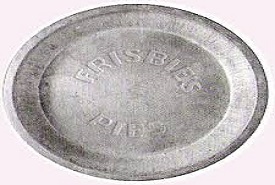 Frisbee is a name trademarked by Wham-O Toys, a milestone they achieved in the 1950s. Long before that happened, the Frisbie Pie Company opened shop in Bridgeport, Connecticut in 1871. By the early 1900s, their pie and cake dishes were being tossed about around the campus of Yale University, giving birth to the tradition of college quad frisbee sessions, which are still going strong today.
Frisbee is a name trademarked by Wham-O Toys, a milestone they achieved in the 1950s. Long before that happened, the Frisbie Pie Company opened shop in Bridgeport, Connecticut in 1871. By the early 1900s, their pie and cake dishes were being tossed about around the campus of Yale University, giving birth to the tradition of college quad frisbee sessions, which are still going strong today.
Eventually, people started buying the dessert plates at five times the price that was paid when the pies and cakes were still inside of them. A man named Fred Morrison saw opportunity in this and made some slight adjustments to the pie plate design, before ultimately choosing to make his flying disc out of plastic. He patented his invention, called the Pluto Platter, and sold the rights to it to Wham-O, who dubbed it the frisbee (in homage to the original pie plates) and the rest is history.
Custom flying discs are still a popular item today and won't be leaving us any time soon. If you're interested, there are many styles available at 4AllPromos.
10. Brand Name: Pogo Stick Actual Name: Jumping Stick
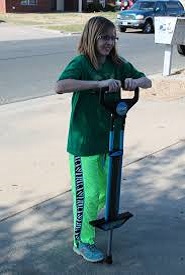 While pogo stick is a trademarked name, the proper generic term is the not-so-different "jumping stick". Pogo Sticks were patented and trademarked in 1919 by George Hansburg. While the veracity of their origin is somewhat disputed, the popular story is as follows. George Hansburg was on a trip to Myanmar when he came across a man who had a daughter named Pogo. The conditions within their village were quite muddy, but Pogo was a very religious child and wished to attend the local temple every day.
While pogo stick is a trademarked name, the proper generic term is the not-so-different "jumping stick". Pogo Sticks were patented and trademarked in 1919 by George Hansburg. While the veracity of their origin is somewhat disputed, the popular story is as follows. George Hansburg was on a trip to Myanmar when he came across a man who had a daughter named Pogo. The conditions within their village were quite muddy, but Pogo was a very religious child and wished to attend the local temple every day.
Pogo's father wanted to offer his daughter a safe and easy mode of transportation, and so he devised a jumping stick that would allow to travel to and from the temple without becoming mired in the mud. As the story goes, Hansburg was struck powerfully by this experience and when he returned home to the USA, he got to work on creating the Pogo stick, named for the girl he met in Myanmar.
Jumping sticks, or Pogo sticks as most people know them, have been one of those classic enduring items that never really goes out of style. They're presently used by teens and adults in extreme sports competitions. Additionally, their name was the inspiration for the "pogo pits" where slam dancing took place at punk shows of the 1970s and 1980s.
11. Brand Name: Scotch Tape Actual Name: Clear Adhesive Tape
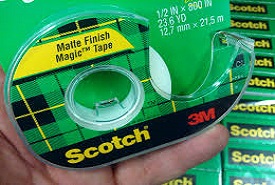 When wrapping presents, putting up flyers, repairing torn book pages, or attending to any other task requiring light adhesives, we immediately think of Scotch Tape. Unless that's the actual brand within your possession, you should be thinking "clear adhesive tape". This is another one where people get confused about brand names vs generic names, as many people believe the generic name of Scotch Tape to be Cellophane Tape. As it turns out, that's a brand name too, only it's no longer trademark protected.
When wrapping presents, putting up flyers, repairing torn book pages, or attending to any other task requiring light adhesives, we immediately think of Scotch Tape. Unless that's the actual brand within your possession, you should be thinking "clear adhesive tape". This is another one where people get confused about brand names vs generic names, as many people believe the generic name of Scotch Tape to be Cellophane Tape. As it turns out, that's a brand name too, only it's no longer trademark protected.
Scotch Tape is produced by 3M and it received its famous name when one of the employees testing it gave a sample to a surly painter. When the tape wasn't up to his standards, he screamed, "Take this tape back to those Scotch bosses of yours and have them put more adhesive on it!"1. At the time, extreme thrift was a stereotype often applied to the Scottish. 3M didn't mind though - they had a catchy name that lent itself perfect to a memorable design pattern that persists to this day.
12. Brand Name: Ziploc Bags Actual Name: Zip Top Bags or Reclosable Plastic Bags
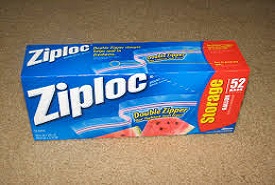 While Ziploc, often mispelled as Ziplock, is a term applied to nearly all plastic bags which can be resealed by way of manual pressing or zipping, the accepted generic terms are "Zip-Top Bags" and "Reclosable Plastic Bags". Zip-Top sounds kind of marketable, but the other is a bit of an awkward mouthful. Still, if you want to keep it nice and legal, that's what you'll say when you're making any official reference to a bag not made under the Ziploc name.
While Ziploc, often mispelled as Ziplock, is a term applied to nearly all plastic bags which can be resealed by way of manual pressing or zipping, the accepted generic terms are "Zip-Top Bags" and "Reclosable Plastic Bags". Zip-Top sounds kind of marketable, but the other is a bit of an awkward mouthful. Still, if you want to keep it nice and legal, that's what you'll say when you're making any official reference to a bag not made under the Ziploc name.
Ziploc is a trademark of S.C. Johnson & Sons, thought it was invented by Dow Chemicals in 1968. In addition to making lunch prepration and food storage in general much easier, Ziploc has treated us to some fun and memorable commercials over the years. The series including the talking finger, shown below, are just one example.
13. Brand Name: Kitty Litter Actual Name: Cat Litter
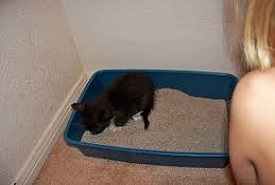 Generally speaking, it's not often handy to get bogged down in semantics, but there are times where it can save you some legal trouble. You might think Kitty Litter and cat litter are so close that the distinction doesn't need to be made, but it's better to err on the side of caution.
Generally speaking, it's not often handy to get bogged down in semantics, but there are times where it can save you some legal trouble. You might think Kitty Litter and cat litter are so close that the distinction doesn't need to be made, but it's better to err on the side of caution.
Kitty Litter is a brand of cat litter that was introduced in 1947. It was one of the earlier brands of clumped clay cat litter to hit the market. In earlier days, most cats were given a box filled with sand in which to take care of their bathroom needs, which is why some people today still call litter boxes "sand boxes".
Interestingly enough, the term cat litter originally referred to the deposits that cats would make into their boxes, rather than the material that received them.
14. Brand Name: Yo-Yo Actual Name: Toy on a String
 Though yo-yo is a far catchier name, toy on a string is the proper generic term for these classic entertainment items. While similar items have been in existence dating back to ancient Greece, the modern toy on a string was developed by a Filippino-American immigrant in 1928. The following year, he sold the rights to his toy to Duncan, which called it the Yo-yo. Though nobody is fully certain as to the origin of the name, many believe that it comes from a word in Tagalog (official language of the Philippines) meaning "return".
Though yo-yo is a far catchier name, toy on a string is the proper generic term for these classic entertainment items. While similar items have been in existence dating back to ancient Greece, the modern toy on a string was developed by a Filippino-American immigrant in 1928. The following year, he sold the rights to his toy to Duncan, which called it the Yo-yo. Though nobody is fully certain as to the origin of the name, many believe that it comes from a word in Tagalog (official language of the Philippines) meaning "return".
Duncan was wise enough to see the potential for this protect to be genericized, so they came out with the slogan, "If it's not a Duncan, it's not a yo-yo!" True as it may have been, it didn't quite work. By 1965, yo-yo had been ruled as a generic name within the USA. Whatever name you give them, they're still going strong. The popularity of our hamburger shaped promotional yo-yos is proof.
15. Brand Name: Popsicle Actual Name: Ice Pop

Popsicle is among the most popular brand of ice pops. The fact that nearly all ice pops are referred to as popsicles is a testament to that fact. What many people don't know is that ice pops were created by accident. In early 1900s, an 11-year-old child named Frank Epperson accidentally left a drink he was stirring with a wooden stick outside overnight. When he ventured outdoors the next day, he decided to consume his mistake and realized he'd stumbled into something big. It was so big that he decided to make a career out of it, and was soon selling them under the name of Epsicles.
Eventually, he realized that Popsicle was a more catchy and appetizing name. in 1925, he sold the rights to his creation, and the Popsicle name changed hands a few times. It is now a trademark of Unilever, who has confronted several companies over spurious use of the name, demanding it be replaced by ice pop wherever used.
16. Brand Name: Dumpster Actual Name: Mobile Garbage Bin
 Dumpsters were invented and named by the Dempster Brothers of Knoxville, Tennessee in 1936. They were the owners of a sanitation business and wanted to create a large trash bin that could be mechanically lifted up and emptied into the back of their trucks. They soon achieved this, and named their invention the dumpster, a portmanteau of the word dump and their last name.
Dumpsters were invented and named by the Dempster Brothers of Knoxville, Tennessee in 1936. They were the owners of a sanitation business and wanted to create a large trash bin that could be mechanically lifted up and emptied into the back of their trucks. They soon achieved this, and named their invention the dumpster, a portmanteau of the word dump and their last name.
The original dumpsters were formatted to go along with their company's trucks, which they soon re-named Dempster Dumpmasters. Many immitators followed over the years, with the mobile garbage bin industry presently being a large and competitive one. In the classic Simpsons episode "The Otto Show", an exchange between Bart and his (at the moment) homeless bus driver pal Otto poked fun at this.
17. Brand Name: ChapStick Actual Name: Lip Balm
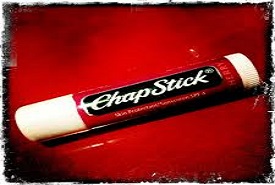 While lip balm is the correct term to use, it's not so hard to see why ChapStick or "chap stick" became genericized. It is, after all, used to treat chapped lips and it comes in stick form. While it was invented in 1881, it wasn't a product that many people knew about until the 1950s. It's quite possible that the original model saw little success due to its design and packaging. The first incarnation was wrapped in aluminum foil and looked like a really awkward homemade candle.
While lip balm is the correct term to use, it's not so hard to see why ChapStick or "chap stick" became genericized. It is, after all, used to treat chapped lips and it comes in stick form. While it was invented in 1881, it wasn't a product that many people knew about until the 1950s. It's quite possible that the original model saw little success due to its design and packaging. The first incarnation was wrapped in aluminum foil and looked like a really awkward homemade candle.
By the 50s, lip balm had changed to its current lip stick style container and operation. All that was needed was a name that would stand out. This name came from the mind of a man named Frank Wright Jr, who also designed the company's logo. He got a real king's ransom for it too - a whopping $15.00. Considering that it's endured for over 60 years, he's been raking in about a quarter per year. A little known fact about ChapStick is that it actually produces suntan lotion and petroleum jelly (better known to most people by the brand name of Vaseline) as well. Is personalized lip balm with UV protection something that would interest you? 4AllPromos has it!
18. Brand Name: DustBuster Actual Name: Cordless Vacuum Cleaner
 Though Black & Decker introduced its first cordless vacuum cleaner in 1974, it didn't have much success until 5 years later when it rolled out the DustBuster. The original version was a bit clunkier and less visually appealing than the 1979 model, which would be the first to actually go by the DustBuster name.
Though Black & Decker introduced its first cordless vacuum cleaner in 1974, it didn't have much success until 5 years later when it rolled out the DustBuster. The original version was a bit clunkier and less visually appealing than the 1979 model, which would be the first to actually go by the DustBuster name.
This product has a bit of a unique situation as both DustBuster and DUSTBUSTER have been legally trademarked by Black & Decker.
19. Brand Name: Hula Hoop Actual Name: Toy Hoop
 Toy hoops are most commonly thought of as a sensation of the 1950s. The younger segment of the population might only be aware of their recent boom in the exercise and personal fitness markets. Whichever viewpoint one holds, these hoops have been around for a quite a bit longer than they're usually given credit for.
Toy hoops are most commonly thought of as a sensation of the 1950s. The younger segment of the population might only be aware of their recent boom in the exercise and personal fitness markets. Whichever viewpoint one holds, these hoops have been around for a quite a bit longer than they're usually given credit for.
Similar hoops have been used for centuries by tribes indigenous to areas all around North America. They were usually made out of wood and were used for ceremonial dances. The modern Hula Hoop, trademarked by Wham-O in 1958, is construced of plastic and has changed very little in the past 60 years.
20. Brand Name: AstroTurf Actual Name: Synthetic Turf
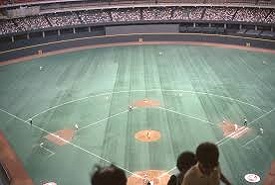
The first well-known use of synthetic turf took place in 1966, when it was installed inside of the Astrodome, home to Major League Basebal's Houston Astros. To tie it in with the stadium, its brand name was officially changed from ChemGrass to AstroTurf.
The advantages of synthetic turf are many. It allows for outdoor field sports to be played indoors during any season, and it is also a lot less expensive and time-consuming to maintain than a stadium lawn. Though it was seen in many major league stadiums until as recently as the early 1990s, only the Rogers Centre (Toronto Blue Jays) and Tropicana Field (Tampa Bay Rays) still use it. Its decline in baseball was due to the fact that players diving for balls could get scratched up pretty badly and that many injuries occurred as the playing surface was essentially a concrete slab with artificial grass on top. It also led to some tricky and fun to watch infield hops, such as in the video below.
21. Brand Name: Crock Pot Acutal Name: Slow Cooker
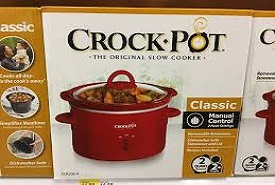 A growing favorite among DIY home chefs, the Crock Pot is actually a name trademarked by Sunbeam Products for the device that is actually called a slow cooker. These are often use for soups, stews, pot roasts, chili, pulled pork, and nealy any solid food that needs to be cooked and marinated in a stock or liquid of some sort.
A growing favorite among DIY home chefs, the Crock Pot is actually a name trademarked by Sunbeam Products for the device that is actually called a slow cooker. These are often use for soups, stews, pot roasts, chili, pulled pork, and nealy any solid food that needs to be cooked and marinated in a stock or liquid of some sort.
A similar product to the slow cooker was originally conceived in the 1950s, but the Crock Pot, as we as its name, was introduced in 1971. Since then, the world has enjoyed 46 years of slowly cooked yet satisfying meals that fill the house with a heavenly aroma.
22. Brand Name: Laundromat Actual Name: Self-Service Coin-Operated Laundry
 The name self-service coin-operated laundry doesn't quite roll off the tongue smoothly, but it is the correct term. However, since laundromat was so widely used and not so ardently protected, it has lost its trademark protected status and we can now use the term whenever we feel like it.
The name self-service coin-operated laundry doesn't quite roll off the tongue smoothly, but it is the correct term. However, since laundromat was so widely used and not so ardently protected, it has lost its trademark protected status and we can now use the term whenever we feel like it.
Harry Greenwald, an inventor from Brooklyn, came up with the concept for laundromats in the 1940s. He was inspired by a restaurant from which he frequently purchased his weekday lunches. This restaurant was called The Automat, and it featured food that was served behind protective glass doors which would be lifted up when someone deposited the required coins. Greenwald showed the owners of Westinghouse how the same technology could be applied to their washing machines. Before long, the laudromat that we are now acquainted with was a booming business model worldwide.
There are so many items in the world today that have been genericized that we could have easily covered double the amount that we did in this article, but who would have the time to read 44 all at once? Part Two will likely be on the way at some point in the not so distant future. What are some of the products you'd like to see in the sequel?
Works Cited
1. Bellis, Nancy The History of Scotch Tape Thought.Co, Sept 5, 2016 http://www.thoughtco.com/history-of-scotch-tape-1992403





